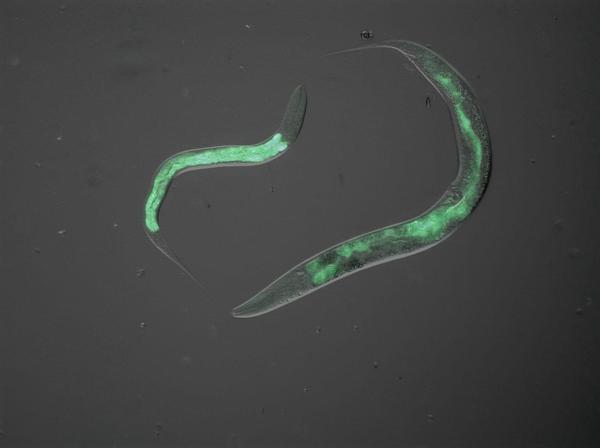Fondation Latsis Internationale Award 2014 - Laurent Mouchiroud

MITONUCLEAR BALANCE AS A DETERMINANT FOR HEALTH- AND LIFESPAN, Project director: Prof. Johan Auwerx
"For his contributions to the understanding of the molecular and cellular mechanisms governing the life expectancy of organisms, in particular the importance of the mitochondria-nucleus intercommunication for the maintenance of the metabolic and cellular homeostasis during the aging process."
Longevity is a fascinating process, regulated by a complex network of intimately linked metabolic systems. Using the BXD cohort of mice as a springboard, we identified the mitochondrial ribosomal proteins (Mrp) as integrators of mitochondrial protein synthesis and modulators of lifespan. A ~50% reduction in Mrp expression corresponds to as much as a 250 day extension in lifespan among the BXD strains of mice. MRPs and the mitochondrial ribosome are essential for translation of the 13 proteins of the electron transport chain encoded by mtDNA. Reduced MRP expression or mitochondrial translation in the nematode Caernohabditis elegans triggers a newly discovered phenomenon we called “mitonuclear protein imbalance”, which corresponds to a disequilibrium between the expression of the mitochondrial subunits encoded by the nuclear DNA and the ones encoded by the mtDNA. This stoichiometric imbalance within the mitochondria activates the mitochondrial protein quality control network, resulting in a robust mitochondrial unfolded protein response (UPRmt). The final outcome of this signaling pathway from the mitochondria to the nucleus is a higher protection of the mitochondria against further stresses and prolong lifespan. We also showed that specific antibiotics or compounds that boost the mitochondrial functions can pharmacologically induce UPRmt in both C.elegans and mouse. Our results show for the first time how the mitochondria and the nucleus can communicate between each other, and why this "dialogue" is fundamental in order to maintain the mitochondrial homeostasis within our cells and to regulate the life expectancy. This discovery suggests that the potential beneficial health impact of this mitochondrial stress pathway may be conserved from worms and flies to vertebrates, opening new avenues for the treatment of mitochondrial and age-related diseases.
